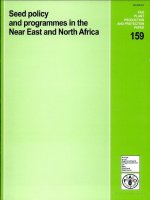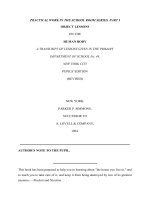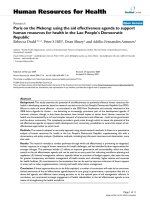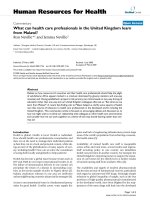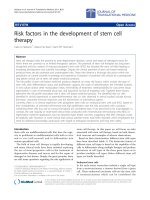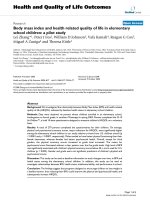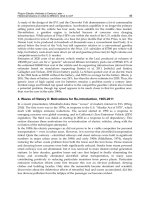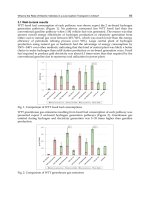PRACTICAL WORK IN THE SCHOOL ROOM SERIES - PART I pdf
Bạn đang xem bản rút gọn của tài liệu. Xem và tải ngay bản đầy đủ của tài liệu tại đây (474.33 KB, 132 trang )
PRACTICAL WORK IN THE SCHOOL ROOM SERIES. PART I
OBJECT LESSONS
ON THE
HUMAN BODY
A TRANSCRIPT OF LESSONS GIVEN IN THE PRIMARY
DEPARTMENT OF SCHOOL No. 49,
NEW YORK CITY
PUPILS' EDITION
(REVISED)
NEW YORK:
PARKER P. SIMMONS,
SUCCESSOR TO
A. LOVELL & COMPANY,
1904.
AUTHOR'S NOTE TO THE PUPIL.
This book has been prepared to help you in learning about "the house you live in," and
to teach you to take care of it, and keep it from being destroyed by two of its greatest
enemies,—Alcohol and Nicotine.
As you study its pages, be sure to find out the meaning of every word in them which
you do not understand; for, if you let your tongue say what your mind knows nothing
about, you are talking parrot-fashion.
And do not forget that you must pay for all the knowledge you obtain, whether you
are rich or poor. Nobody else can pay for you. You, your own self, must pay
attention with your own mind, through your own eyes and ears, or do without
knowledge.
Be wise: gain all the knowledge you can concerning everything worth knowing, and
use it for the good of yourself and other people.
"KNOWLEDGE IS POWER."
A, the heart; B, the lungs; light cross lines, arteries; heavy lines, veins.
[5]
PART I.
FORMULA FOR INTRODUCTORY LESSONS.
1. My body is built of bones covered with flesh and skin; the blood flows through it,
all the time, from my heart. I breathe through my nose and mouth, and take the air into
my lungs.
2. The parts of my body are the head, the trunk, the limbs.
3. My head.
The crown of my head.
The back of my head.
The sides of my head.
My face.
My forehead.
My two temples.
My two eyes.
My nose.
My two cheeks.
My mouth.
My chin.
My two ears.
My neck.
My two shoulders.
My two arms.
My two hands.
My trunk.
My back.
My two sides.
My chest.
My two legs.
My two knees.
My two feet.
I am sitting erect.
QUESTIONS FOR THE FORMULA.
1. Tell about your body.
2. Name the parts of the body.
3. Name the parts of the head, trunk, and limbs.
[6]
THE NOSE AND THE MOUTH.
Be sure to keep your mouth closed when you are not talking or singing, especially
when you are walking, running, orasleep. The two nostrils are outside doors, always
open to admit the air, and inside of the upper part of the nose there are two other
openings, through which it passes into the throat. Air which goes this way is warmed,
cleansed, and moistened, but that which is breathed directly through the mouth is not
so well prepared for its work in the lungs.
Do not use your mouth as a box or a pin-cushion; the pin, or whatever yon have put
into it, may slip into your throat and cause your death.
QUESTIONS ON THE INTRODUCTORY LESSONS.
Of what is the body built?—"Of bones."
What covers the bones?—"Flesh."
What covers the flesh?—"Skin."
What flows through the body?—"Blood."
Where does the blood flow from?—"The heart."
When does the blood flow from the heart?—"Every time the heart beats."
Show with your hand how the heart beats.
When does the heart beat?—"All the time."
What happens when the heart stops beating?—"We die."
What do you see on the back of your hand, beneath the skin?—"Veins"
What is in the veins?—"Bad blood."
What are the veins?—"Pipes for the bad blood to pass through."
Where do the veins carry the bad blood?—"To the heart."
Where does the heart send the bad blood?—"To the lungs."
What happens to the bad blood when in the lungs?—"It is made pure."
What makes the bad blood pure?—"The air."
How does the air get into the lungs?—"Through my nose, mouth, and windpipe."
[7]
What is breathing?—"Letting the air into and out of my lungs, through my nose,
mouth, and windpipe."
When do you breathe?—"All the time."
What do you breathe?—"Air."
What do you breaths through?—"My nose, mouth, and windpipe."
Where do you get the air?—"Everywhere."
Where do the lungs send the pure blood?—"To the heart."
Where does the heart send the pure blood?—"All through the body."
How does the heart send the pure blood through the body?—"Through pipes called
arteries."
What kind of blood passes through the arteries?—"Pure blood."
What kind of blood passes through the veins?—"Impure blood."
What carries the pure blood through the body?—"The arteries."
What carries the impure blood through the body?—"The veins."
What makes blood?—"Food and drink."
What is food?—"Anything good to eat."
What is drink?—"Anything good to drink."
Name some kinds of wholesome food.—"Meat, potatoes, oranges, apples, etc."
Name some kinds of wholesome drink.—"Water, milk, lemonade, etc."
What do you mean by wholesome food?—"Food that will make good blood."
What do you mean by wholesome drink?—"Drink that will make good blood."
What does the blood make?—"Bones, flesh, skin, hair, nails, and cartilage."
What use is the blood to the body?—"It makes the body grow, and keeps it alive."[8]
Name some kinds of poisonous drinks.—"Rum, brandy, ale, cider, etc."
What do you mean by poisonous drinks?—"Drinks which hurt or poison the body."
Why do you say that rum and the other drinks you have named are poisonous?—
"Because they do harm to every part of the body."
Which part do they hurt most?—"The head or brain."
What harm do they do to the brain?—"They make it unfit to do its work."
What work does the brain do?—"Thinking."
Then what harm do rum, brandy, wine, and these other drinks do to the brain?—"They
make it unfit to think."
What other poison do some people use?—"Tobacco."
When do children use tobacco?—"When they chew tobacco; when they smoke cigars
or cigarettes."
How much does tobacco poison hurt children?—"More than it hurts anybody else."
In what way does it hurt children?—"It keeps children from growing fast; from being
strong and healthy; and from learning as well as they ought."
How does it do all this mischief to children?—"It poisons their lungs, their heart and
blood, and their brain."
[9]
PART II.
FORMULA FOR THE PARTS AND JOINTS OF THE BODY:
1. My limbs are my two arms and my two legs.
2. My arm has two parts:
my upper arm, my fore-arm;
and three joints:
my shoulder joint, my elbow joint, my wrist joint.
3. My hand is used in holding, throwing, catching, and feeling:
the palm of my hand,
the back of my hand,
my fingers,
my thumb,
my forefinger,
my middle finger,
my ring finger,
my little finger,
my knuckles,
my finger joints,
my nails,
the tips of my fingers,
the veins,
the ball of my thumb,
and the lines where the flesh is bent.
4. My leg has two parts:
my thigh, and my lower leg;
and three joints:
my hip joint, my knee joint, my ankle joint.
5. My foot is used in standing, walking, running, skating, and jumping:
my instep,
my toes,
the sole of my foot,
the ball,
the hollow,
the heel,
my toe joints,
and my toe nails, which protect my toes.
[10]
QUESTIONS FOR THE FORMULA.
1. Which are your limbs?
2. Tell about your arm.
3. Tell about your hand.
4. Tell about your leg.
5. Tell about your foot.
THE ELBOW JOINT.
(A hinge joint.)
THE HIP JOINT.
(A ball-and-socket joint.)
Some joints, as those of the skull, are immovable; some, as those of the spine, may be
moved a little; and others more or less freely, as those of the limbs. In machines, the
parts which move upon each other need to be oiled, to keep them from wearing out;
but the joints of our bodies oil themselves with a thin fluid, called synovia. This fluid
resembles the white of an egg, and comes from a smooth lining inside of the joints.
The ends of the bones which form joints are covered by gristle or cartilage, and are
fastened together by very strong, silvery white bands, calledligaments. A sprain is
caused by overstretching or tearing some of these ligaments.
[11]
QUESTIONS ON THE LIMBS AND JOINTS OF THE BODY.
What is the trunk of your body?—"All the body but the head and limbs."
Which are your limbs?—"My two arms and my two legs."
How many limbs have you?—"Four."
How many parts has your arm?—"Two parts: my upper arm and my fore-arm."
How many parts has your leg?—"Two parts: my thigh and my lower leg."
How many joints has your arm?—"Three joints: my shoulder joint, my elbow joint,
my wrist joint."
How many joints has your leg?—"Three joints: my hip joint, my knee joint, my ankle
joint."
What are joints?—"Bending places."
How many kinds of joints have you?—"Two: hinge joints, and ball-and-socket joints."
What kind of a joint is the shoulder joint?—"A ball-and-socket joint."
Why do you call the shoulder joint a ball-and-socket joint?—"Because at the shoulder
the arm may move in any direction."
Tell how the shoulder joint is made.—"The upper end of the bone of the upper arm is
rounded and fastened in a hollow place called a socket."
Which of the joints of the arm and hand are hinge joints?—"The elbow joint, the wrist
joint, the thumb joint, the finger joints."
Which of the joints of the leg and foot are hinge joints?—"The knee joint, the ankle
joint, the toe joint."
Which of the joints of the leg is a ball-and-socket joint?—"The hip joint."
Where is the heel?—"At the back part of the foot."
Where is the ball of the foot?—"On the sole of the foot, behind the great toe."
Where is the hollow of the foot?—"In the middle of the sole of the foot."[12]
Where is the sole of the foot?—"On the bottom of the foot."
Where is the instep?—"Between the ankle joint and the toes."
Where is the lower leg?—"Between the knee joint and the ankle joint."
Where is the thigh?—"Between the hip joint and the knee joint."
Where is the upper arm?—"Between the shoulder joint and the elbow joint."
Where is the fore-arm?—"Between the elbow joint and the wrist joint."
Where are the toe joints?—"Between the parts of the toes."
Where are the finger joints?—"Between the parts of the fingers."
Where is the ankle joint?—"Between the lower leg and the foot."
Where is the knee joint?—"Between the thigh and the lower leg."
Where is the hip joint?—"Between the trunk and the thigh."
Where is the wrist joint?—"Between the fore-arm and the hand."
Where is the elbow joint?—"Between the upper arm and the fore-arm."
Where is the shoulder joint?—"Between the trunk and the upper arm."
Where are the tips of the fingers?—"At the ends of the fingers."
Where is the ball of the thumb?—"On the palm of the hand, below the thumb."
Where is the palm of the hand?—"On the inside of the hand, between the wrist and
fingers."
[14]
THE SKELETON.
1. The skull.
2. The spine.
3. The ribs.
4. The breastbone.
5. The shoulder blades.
6. The collar bones.
7. The bone of the upper arm.
8. The bones of the forearm.
9. The bones of the wrist.
10. The bones of the fingers.
11. The bones of the thigh.
12. The bones of the lower leg.
13. The bones of the ankle.
14. The bones of the toes.
15. The kneepan.
[15]
PART III.
FORMULA FOR THE LESSON ON THE BONES OF THE BODY.
1. My bones are hard; they make my body strong. There are about two hundred bones
in my body.
2. The bones of my head are
my skull and my lower jaw;
my face has fourteen bones; my ear has four small bones; at the root of my tongue is
one bone.
3. The bones of my trunk are
my spine,
my ribs,
my breastbone,
my two shoulder blades,
and my two collar bones.
4. My upper arm has one bone; my fore-arm has two bones; my wrist has eight bones;
from my wrist to my knuckles are five bones; my thumb has two bones; each finger
has three bones, making nineteen bones in my hand.
5. My thigh has one bone; my lower leg has two bones; my knee-pan is the cap which
covers and protects my knee; in my foot, near my heel, are seven bones; in the middle
of my foot are five bones; my great toe has two bones; each of my other toes has three
bones; making twenty-six bones in my foot.
QUESTIONS FOR THE FORMULA.
1. Tell about your bones.
2. Tell about the bones of the head.
3. Tell about the bones of the trunk.[16]
4. Tell about the bones of the arm and hand, beginning with the upper arm.
5. Count the bones of the hand.
6. Tell about the bones of the leg and foot, beginning with the thigh.
FIG. B.
1, 2, 3, 4, 5, the bones of the palm of the hand.
6, 7, the bones of the thumb.
8, 9, 10, the bones of the first or fore-finger.
11, 12, 13, the bones of the second or middle finger.
14, 15, 16, the bones of the third or ring finger.
17, 18, 19, the bones of the fourth or little finger.
FIG. A.
1, 2, 3, 4, the upper row of the bones of the wrist.
5, 6, 7, 8, the lower row of the bones of the wrist.
9, 10, the lower ends of the bones of the fore-arm.
11, 12, 13, 14, 15, the upper ends of the bones of the palm of the hand.
The bones of the wrist are so firmly fastened together that they are seldom put out
of place. The upper row joins with the bones of the fore-arm, the lower with those of
the palm of the hand.
[17]
QUESTIONS ON THE BONES.
How many bones in the body?—"About two hundred."
Of what use are the bones to the body?—"They make the body strong; they form the
framework of the body."
How many bones in the face?—"Fourteen."
How many bones in the ear?—"Four small bones."
How many bones at the root of the tongue?—"One."
How many bones in the upper arm?—"One."
How many bones in the fore-arm?—"Two."
How many bones between the wrist and the knuckles?—"Five."
How many bones in the thumb?—"Two."
How many bones in each of the fingers?—"Three."
How many bones in the whole hand?—"Nineteen."
How many bones in the hand and arm?—"Thirty."
How many bones in the thigh?—"One long bone."
How many bones in the lower leg?—"Two."
How many bones in the heel?—"Seven."
How many bones in the middle of the foot?—"Five."
How many bones in the great toe?—"Two."
How many bones in each of the other toes?—"Three."
How many bones in the whole foot?—"Twenty-six."
How many bones in the foot and leg?—"Thirty."
How many bones in two arms and two hands?—"Sixty."
How many bones in two legs and two feet?—"Sixty."
How many bones in the limbs?—"One hundred and twenty."
Where is the knee-pan?—"Over the knee joint."
Where is the longest bone of the body?—"In the thigh."
Where are the smallest bones of the body?—"In the ear."
Point to the collar bones.
Point to the shoulder blades.
How many collar bones have you?—"Two."
How many shoulder blades have you?—"Two."
Point to the spine.
Point to the breastbone.
Point to the skull.
[18]
EXERCISE FOR COUNTING THE BONES OF THE HAND.
FOR PRIMARY CLASSES.
I.
1. Close both hands.
2. Raise the forefinger of the right hand, as the index or pointing finger.
3. Place the index finger upon the lower thumb joint of the left hand.
4. Draw the index finger down to the wrist, over the bone between the thumb knuckle
and the wrist, and count "One."
5. Place the index finger on the knuckle of the first finger.
6. Draw the index finger down to the wrist, over the bone leading from the first finger
to the wrist, and count "Two."
7. So on, for each of the three other bones of the hand. Repeat until no mistake is
made in touching or counting.
II.
1. Raise the thumb, and place the index finger of the right hand on the middle of the
upper part of the thumb for bone "Six"; then
2. On the lower part of the thumb for bone "Seven." Repeat from the beginning, until
the children can touch and count each bone properly.
III.
1. Keep the thumb erect; raise the first finger of the left hand.
2. Place the index finger on the bone between the tip and the first joint of the first
finger for bone "Eight."
3. Between the first and middle joint for bone "Nine."
4. Between the middle and third joint for bone "Ten." Review, from the beginning,
until the class can touch and count every bone as directed.
IV.
1. Keep the thumb and forefinger erect; raise the second finger and touch, as in the
lesson on the first finger bones, "Eleven," "Twelve," and "Thirteen." Review.[19]
2. Proceed in the same manner for the third and fourth fingers, always beginning with
the bone nearest the tip of the finger, and touching that at the lowest part last.
If the exercise has been properly performed, every child will say "Nineteen" as its
index finger touches the lowest bone of the little finger, and all the fingers of every
left hand will be outspread.
THE BONES
OF THE HEAD:
Skull 8
Face, including the lower
jaw
14
Tongue 1
Ears 8
——
31
OF THE TRUNK:
Spine 24
Ribs 24
Breastbone 8
Shoulder blades 2
Collar bones 2
——
60
OF THE UPPER LIMBS:
Upper arms
1 x 2 =
2
Fore-arms
2 x 2 =
4
Wrists
8 x 2 =
16
Hands
19 x 2 =
38
——
60
OF THE LOWER LIMBS:
Thighs
1 x 2 =
2
Knee-pans
1 x 2 =
2
Lower legs
2 x 2 =
4
Feet
26 x 2 =
52
——
60
Total, 211, not including the teeth.
[1]
We teach the children to say "about two hundred," because there is not always the
same number of bones in the body. In some parts two or three bones unite and form
one bone. For example: the breastbone of a child is made up of eight pieces; some of
